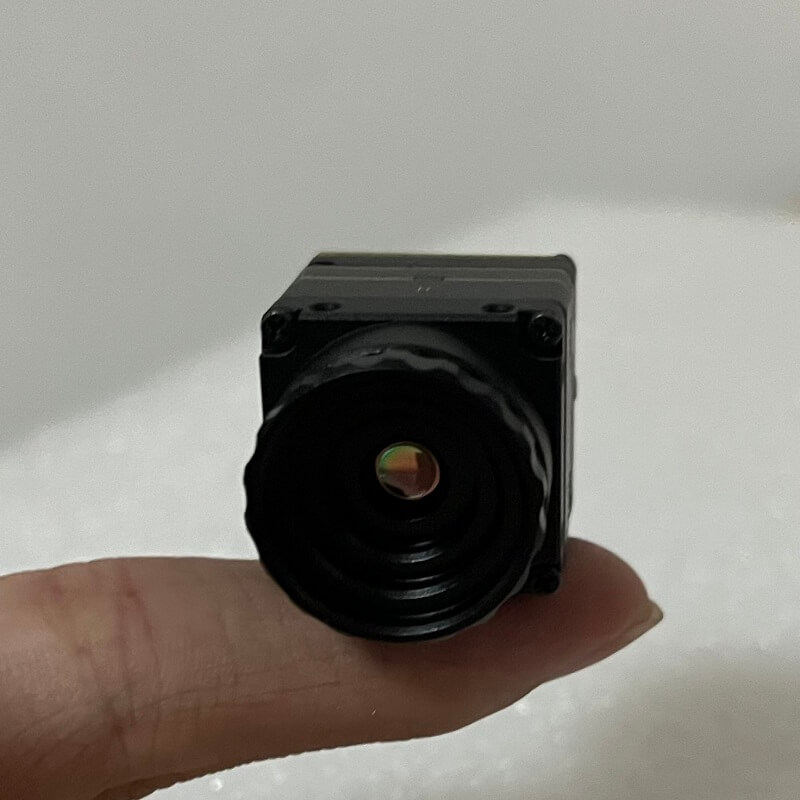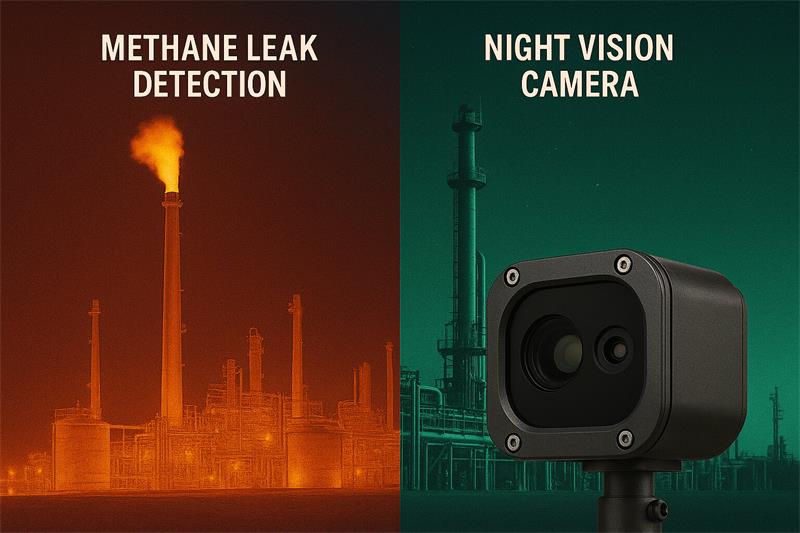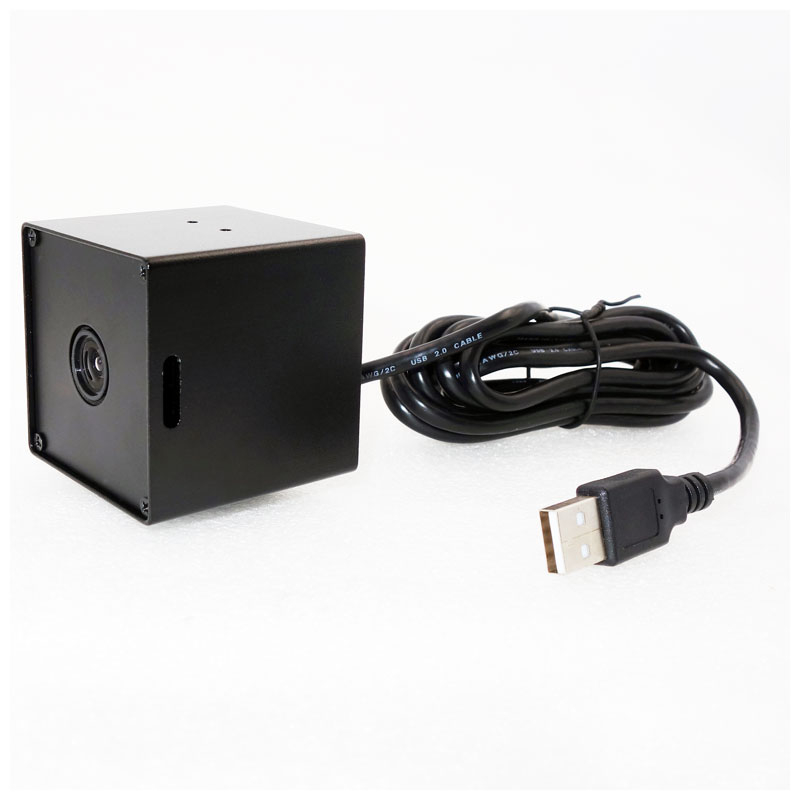
Oil & Gas Exploration and Production Sites: Reliable Monitoring with Thermal Imaging & Night Vision Cameras
Introduction
In the vast and often unforgiving landscapes of oil and gas exploration and production sites, operators face a myriad of challenges that demand unwavering vigilance. Remote locations, extreme weather conditions, and the relentless operation of heavy machinery create an environment where even minor oversights can escalate into major disasters. From the frozen tundras of Alaska to the scorching deserts of Texas, these sites require constant surveillance to mitigate risks associated with equipment failures, environmental hazards, and human safety. As the industry grapples with increasing regulatory pressures and the push for sustainable practices, reliable monitoring solutions have become indispensable.
Consider the complexities involved: pipelines stretching hundreds of miles, drilling rigs operating around the clock, and storage facilities housing volatile substances. Harsh conditions like high winds, dust storms, and sub-zero temperatures can impair traditional monitoring methods, leading to delayed responses and costly downtime. Moreover, with the rise in focus on methane leak detection—a hot topic in recent Google search trends due to environmental regulations—companies in the oil and gas sector are seeking advanced technologies to ensure compliance and operational efficiency. High-CPC keywords like "oil rig safety monitoring" and "remote oil and gas sites surveillance" reflect the growing demand for innovative tools that provide real-time insights, preventing incidents before they occur. Thermal imaging and night vision cameras stand out as vital assets, offering non-invasive, proactive monitoring that enhances safety and productivity in these demanding settings.

The Importance of Real-Time Surveillance in Oil & Gas
Real-time surveillance is the backbone of modern oil and gas operations, transforming reactive maintenance into predictive strategies that save time, money, and lives. In an industry where downtime can cost millions per day, the ability to detect anomalies instantly is paramount. Predictive maintenance, for instance, uses data from monitoring systems to forecast equipment failures, allowing teams to address issues before they lead to shutdowns. This approach is particularly crucial for heavy machinery like pumps, compressors, and valves, which are prone to wear and tear under constant use.
Early leak detection is another critical facet, especially with the surge in searches for "methane leak detection" and "gas emission monitoring" over the last two years. Methane, a potent greenhouse gas, can escape from wells, pipelines, or storage tanks, posing environmental risks and attracting hefty fines from bodies like the EPA. Real-time surveillance enables immediate identification of such leaks, facilitating swift containment and reducing emissions. Similarly, in emergencies such as fires or spills, rapid response is essential. Systems equipped with advanced cameras can alert operators to overheating components or unauthorized intrusions, preventing escalation into catastrophic events.
The integration of AI in oil and gas surveillance—another trending keyword with high CPC value—amplifies these benefits by analyzing data patterns and flagging potential threats autonomously. For maintenance providers and supply chain companies in the Americas and Europe, adopting such technologies not only ensures regulatory compliance but also boosts operational resilience. By minimizing unplanned outages and optimizing resource allocation, real-time monitoring directly contributes to bottom-line improvements, making it a strategic investment in an era of volatile energy markets.
Thermal Imaging for Overheating and Leak Detection
Thermal imaging technology has revolutionized how oil and gas sites handle overheating and leak detection, providing a layer of visibility that traditional methods simply cannot match. These cameras detect infrared radiation emitted by objects, creating heat maps that reveal temperature variations invisible to the naked eye. In exploration and production environments, this capability is invaluable for spotting hot spots on electrical panels, motors, or bearings that signal impending malfunctions.
One of the most pressing applications is in leak detection, where thermal cameras excel at identifying oil spills or gas emissions early. For example, "thermal imaging for pipelines" has seen a spike in Google searches, driven by the need for efficient, non-contact inspection methods. Unlike manual patrols, which are labor-intensive and prone to human error, thermal imaging allows for continuous scanning of vast areas, detecting subtle temperature changes caused by leaking fluids. This is especially relevant for methane leak detection, a keyword with high CPC due to its ties to ESG (Environmental, Social, and Governance) initiatives. By capturing thermal signatures of escaping gases, these cameras help operators comply with stringent regulations like those from the EU's Methane Strategy or the U.S. Clean Air Act.
Furthermore, in flare monitoring—another emerging trend in search data—thermal imaging ensures that flare stacks operate efficiently, minimizing unburned hydrocarbons and reducing environmental impact. For equipment maintenance firms, integrating thermal cameras into routine inspections enhances asset integrity management, extending the lifespan of critical infrastructure. Case studies from major players like ExxonMobil and Shell demonstrate how these systems have prevented multimillion-dollar losses by averting equipment failures. With rugged designs certified for hazardous areas (e.g., ATEX-rated), thermal imaging cameras withstand explosive atmospheres, making them ideal for offshore rigs and onshore facilities alike.

Night Vision for 24/7 Monitoring
While thermal imaging shines in detecting heat-related issues, night vision cameras ensure seamless monitoring during low-light conditions, enabling true 24/7 surveillance. Exploration sites, drilling rigs, and production facilities often operate in remote areas with minimal artificial lighting, where darkness can conceal hazards like intruders, wildlife intrusions, or structural weaknesses. Night vision technology amplifies available light or uses infrared illuminators to produce clear images, even in pitch-black environments.
The necessity for such systems is underscored by recent trends in "night vision for industrial safety" and "hazardous area surveillance," which have gained traction in Google searches amid heightened security concerns. In offshore platforms, for instance, night vision cameras monitor perimeter breaches or equipment tampering, integrating with alarm systems for instant notifications. On drilling rigs, they provide visibility for night shifts, reducing accident risks associated with poor visibility—a factor in many OSHA-reported incidents.
For supply chain companies specializing in equipment upkeep, night vision facilitates remote inspections without disrupting operations. Paired with drone thermal imaging for leak detection, these cameras offer aerial overviews of pipelines and wellheads, covering areas inaccessible by ground teams. High-resolution models with low-light sensitivity ensure detailed footage, aiding in forensic analysis post-incident. As the industry moves toward digital transformation, night vision's role in comprehensive monitoring ecosystems cannot be overstated, providing peace of mind in an unpredictable field.

Key Features for the Oil & Gas Industry
Selecting the right thermal imaging and night vision cameras for oil and gas applications requires focusing on features tailored to the sector's unique demands. Rugged, weather-resistant designs are non-negotiable; these devices must endure extreme temperatures, corrosive salts, and dust ingress, often meeting IP67 or higher ratings. Explosion-proof certifications like ATEX or IECEx ensure safe operation in volatile zones, preventing ignition sources in gas-laden atmospheres.
Remote viewing capabilities stand out as a game-changer, allowing operators to access live feeds via mobile apps or cloud platforms from anywhere. This aligns with the rising interest in "remote monitoring oil rigs," a keyword reflecting the shift to decentralized management post-pandemic. High-resolution imaging—up to 4K or beyond—delivers crisp details for precise analysis, while advanced optics handle long-range detection in expansive sites.
Easy integration with existing systems is crucial for seamless adoption. These cameras should interface with SCADA (Supervisory Control and Data Acquisition) networks, AI analytics, or IoT platforms for enhanced functionality. Features like motion detection, thermal thresholding, and automated alerts streamline workflows, reducing false positives and operator fatigue. For maintenance providers, customizable software for data logging supports predictive analytics, tying into broader trends like "AI in oil and gas surveillance." Ultimately, these features not only boost efficiency but also align with sustainability goals by minimizing on-site personnel exposure.
Conclusion & Call to Action
In summary, thermal imaging and night vision cameras are indispensable for reliable monitoring in oil and gas exploration and production sites. They address core challenges by enabling predictive maintenance, early detection of leaks and overheating, and uninterrupted 24/7 surveillance, all while ensuring safety and regulatory compliance. As search trends highlight keywords like "drone thermal imaging for leak detection" and "flare monitoring," it's clear that these technologies are at the forefront of industry innovation.
For petroleum equipment maintenance firms and supply chain partners across the U.S. and Europe, investing in these solutions is a step toward operational excellence and environmental stewardship. Enhance your site's safety and efficiency today—request a quote or schedule a demo to see how our thermal and night vision systems can transform your monitoring strategy.
Novel micro thermal imaging camera module product links
https://www.okgoobuy.com/china-fpv-thermal-imaging-camera.html
Sony Starvis imx385 night vision USB camera
https://www.okgoobuy.com/Industrial-Starvis-imx385-USB-Camera.html